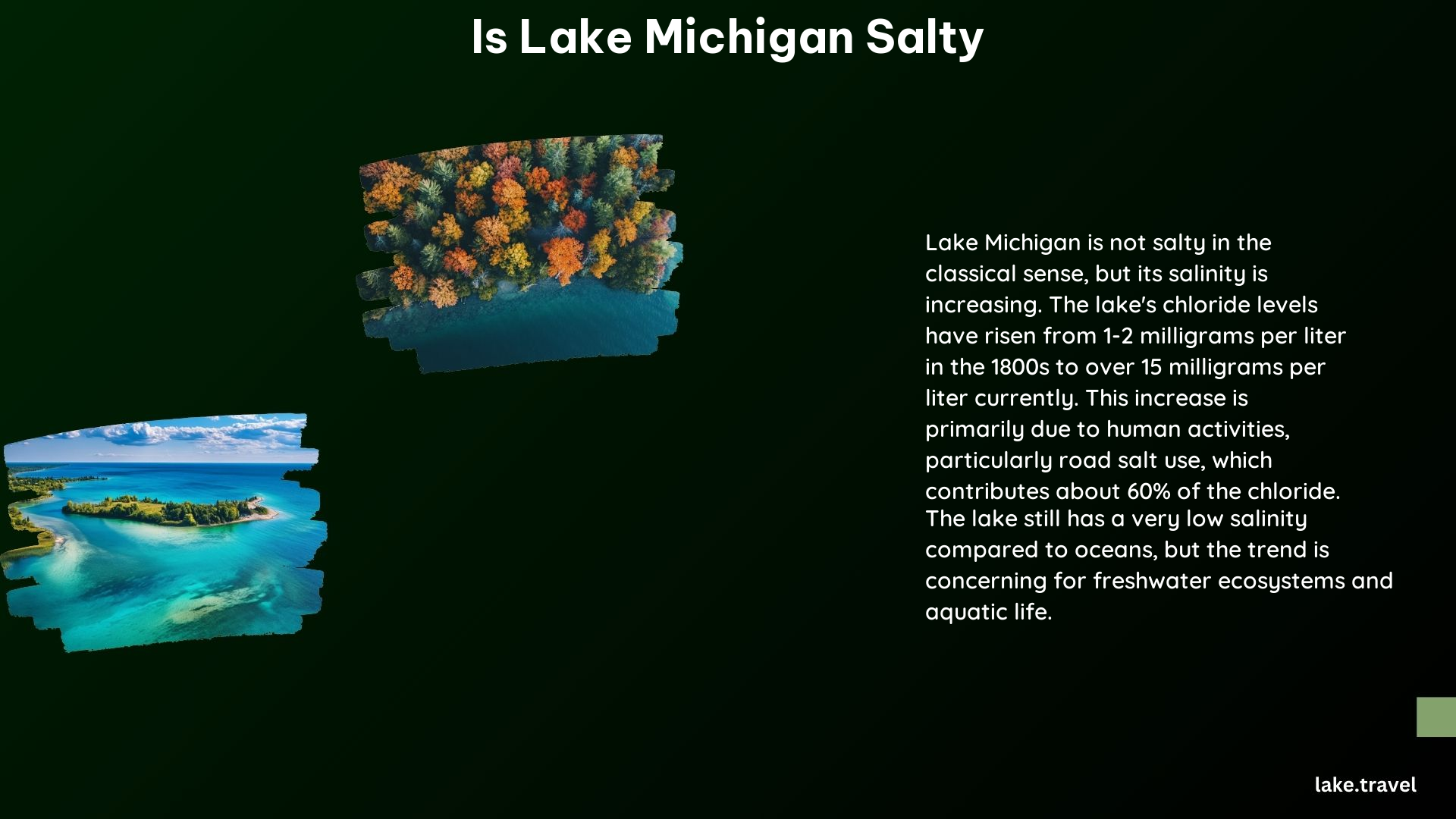Lake Michigan is not salty in the same sense as the ocean, but it does contain some salt. The lake’s salinity level is relatively low compared to the ocean, which has a salinity of around 35 grams of salt per liter. Lake Michigan’s salinity level is currently around 15 milligrams of chloride per liter, which is significantly lower than the ocean’s salinity.
The Sources of Salt in Lake Michigan

The primary source of salt in Lake Michigan is road salt used for deicing roads during winter. This salt flows into the lake through its tributaries, contributing to the increase in salinity over time. Other sources of salt include water softeners and agricultural runoff.
Road Salt Contribution
Over 1 million metric tons of salt flow into Lake Michigan each year, with the majority coming from road salt used for deicing. This salt is carried by runoff and tributaries, eventually making its way into the lake.
Water Softeners and Agricultural Runoff
While road salt is the primary source, water softeners and agricultural runoff also contribute to the salt levels in Lake Michigan. The salt from these sources can also find its way into the lake through various waterways.
The Impact of Salinity on Lake Michigan’s Ecosystem

While the salinity level of Lake Michigan is increasing, it is still considered a freshwater lake. The current level of 15 milligrams of chloride per liter is not yet harmful to most aquatic organisms, but it could become a concern if it continues to rise.
Potential Harm to Freshwater Organisms
Increased salinity can be detrimental to many freshwater organisms that are adapted to a low-salt environment. This can lead to changes in the lake’s ecosystem, affecting the overall balance and diversity of aquatic life.
Drinking Water Quality Concerns
The rising salinity levels in Lake Michigan can also impact the quality of drinking water drawn from the lake. Increased salt content can affect the taste and potentially pose health concerns if the levels become too high.
Efforts to Reduce Salt Pollution in Lake Michigan
Researchers and policymakers are working to address the issue of salt pollution in Lake Michigan. Strategies to reduce salt input and mitigate the effects on the ecosystem are being explored.
Reducing Road Salt Usage
One of the primary focuses is on reducing the amount of road salt used for deicing during the winter months. This can be achieved through the use of alternative de-icing methods, improved application techniques, and public education campaigns.
Promoting Sustainable Practices
Encouraging the use of water softeners that minimize salt discharge and promoting sustainable agricultural practices can also help reduce the overall salt input into the lake.
Monitoring and Research
Ongoing monitoring and research are essential to understanding the long-term trends and impacts of salinity in Lake Michigan. This information can guide policymakers and stakeholders in developing effective strategies to protect the lake’s ecosystem.
Conclusion
While Lake Michigan is not as salty as the ocean, the increasing salinity levels in the lake are a growing concern. The primary source of this salt is road salt used for deicing, which flows into the lake through its tributaries. Other sources, such as water softeners and agricultural runoff, also contribute to the problem.
The rising salinity levels can potentially harm freshwater organisms and affect the quality of drinking water drawn from the lake. Efforts are underway to address this issue, including reducing road salt usage, promoting sustainable practices, and conducting ongoing monitoring and research.
As a Lakes Touring Enthusiast, it’s important to be aware of the challenges facing Lake Michigan and to support initiatives that aim to protect this valuable natural resource.
References:
- https://www.wpr.org/environment/study-finds-more-1m-tons-salt-flowing-lake-michigan-each-year
- https://msutoday.msu.edu/news/2022/road-salt
- https://www.michigan.org/article/trip-idea/great-lakes-fun-facts
- https://news.wisc.edu/study-finds-that-not-even-the-largest-lakes-in-the-world-are-safe-from-salt/
- https://eos.org/articles/lake-michigans-salinity-is-on-the-rise
